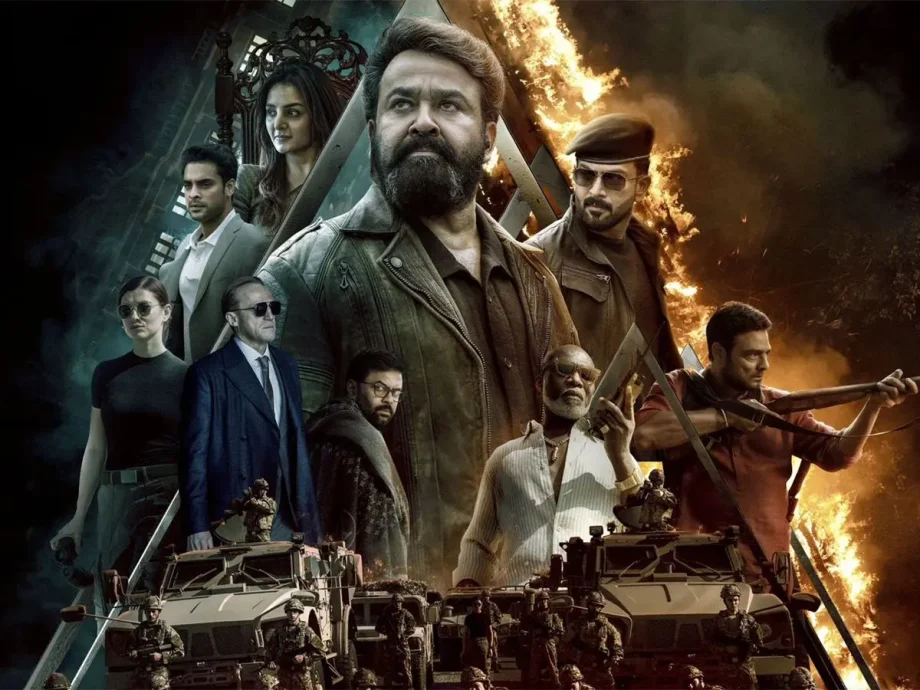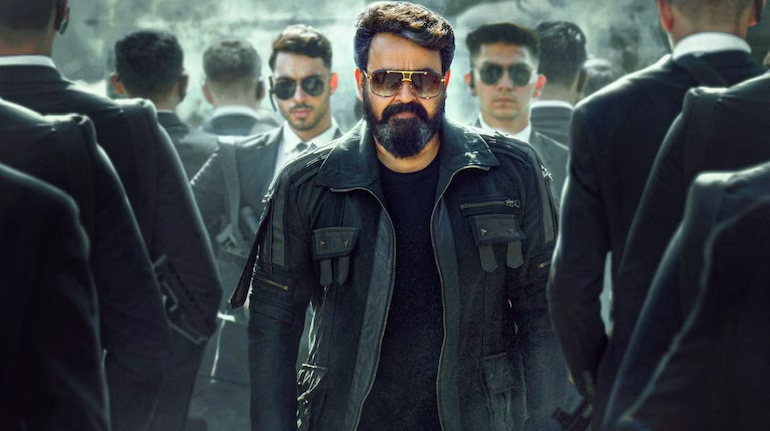Prithviraj Sukumaran’s L2: Empuraan aims high, both in ambition and execution, expanding the world introduced in Lucifer (2019) into a grander, more complex narrative. The film, envisioned as the second chapter of a trilogy, seeks to blend high-octane action with political commentary, all while centering itself around its larger-than-life protagonist, Stephen Nedumpally, aka Khureshi Ab’raam. With Mohanlal at the helm, L2: Empuraan delivers moments of cinematic spectacle, but also encounters challenges in balancing its narrative depth with its scale.
The Expansion of a Cinematic Universe
Unlike Lucifer, which had a relatively straightforward political drama structure infused with action elements, L2: Empuraan broadens its canvas significantly. The narrative stretches across multiple locations, introducing new players, shifting alliances, and expanding the mythos surrounding Stephen’s dual identity. The screenplay positions Stephen as both a myth and a reality—an omnipresent force orchestrating events from the shadows.

At its core, the film attempts to juxtapose personal ambition against national and international political games. The character arcs of Jathin Ramdas (Tovino Thomas) and Priyadarshini Ramdas (Manju Warrier) serve as crucial elements in this political landscape, with power struggles unfolding within a family already fractured by ideological differences. While this thematic weight is commendable, the execution at times struggles to keep the audience consistently engaged, as the film often leans into prolonged character-building rather than propulsive storytelling.
Mohanlal’s Commanding Presence
Mohanlal’s portrayal of Stephen/Khoreshi is designed to exude dominance, and he delivers on that expectation. The film doesn’t rush to showcase his physicality, instead allowing his presence to simmer until key moments demand his intervention. His silence often speaks louder than his words, and his ability to command attention with minimal dialogue remains a defining trait. The much-anticipated jungle fight sequence is a clear highlight, giving Mohanlal a platform to exhibit his action prowess while reinforcing his character’s near-mythological status.

Prithviraj Sukumaran, in addition to directing, takes on a supporting role, though his screen time is limited. His character, Zayed, functions as a loyal lieutenant, but the film does not explore his dynamics with Stephen as much as Lucifer did. Manju Warrier brings weight to her role, creating a compelling arc that intersects with the film’s political narrative, while Tovino Thomas is given a role of significance but not enough defining moments to leave a strong impression.
Visual Scale and Cinematic Craft
One of L2: Empuraan’s most striking aspects is its visual execution. The cinematography embraces a sleek, grandiose style, making every frame feel like part of a larger-than-life saga. The church fight sequence and high-impact action set pieces are choreographed with precision, often invoking a sense of Hollywood-scale grandeur. Explosions, destruction, and sweeping wide shots are employed generously, creating a spectacle that elevates the film’s cinematic appeal.
However, while the visual elements are impressive, certain CGI-heavy moments expose limitations. Given the film’s ambitious scope, there are instances where visual effects do not seamlessly integrate with the practical sequences. While these moments do not detract significantly, they occasionally undercut the immersive quality of the action.
A Film That Takes Its Time
One of the biggest challenges L2: Empuraan faces is its pacing. The film runs for over three hours, and while it is packed with character introductions, subplots, and world-building, the narrative doesn’t always move forward with urgency. Certain scenes, particularly in the first half, take longer than necessary to establish their stakes. This slow-burn approach can test patience, especially when the film occasionally prioritizes character elevation over narrative progression.

Additionally, the inclusion of multiple characters sometimes works against the film. While the expansion of the universe is necessary for the trilogy’s overarching vision, not every character is given enough depth to make their presence truly impactful. Some supporting roles, despite their significance to the story, remain underdeveloped, making certain subplots feel less consequential than intended.
Balancing Politics and Action
Where L2: Empuraan tries to differentiate itself from traditional action films is in its integration of political subtext. The film doesn’t merely present a battle of good versus evil; it delves into the intersections of power, governance, and ideological conflicts. Political maneuvering plays a crucial role, with dialogues and conflicts that echo real-world parallels.
However, in blending politics with high-stakes action, the film occasionally struggles to maintain equilibrium. At times, the political undertones threaten to overshadow the narrative momentum, leading to stretches where the film becomes more about statements than storytelling. While these moments are intellectually engaging, they sometimes slow the film’s rhythm, making it feel denser than its genre typically demands.
Final Thoughts
L2: Empuraan is a bold attempt at pushing the boundaries of mainstream Indian cinema. It is an ambitious, visually compelling film that expands the world of Lucifer while setting up the final chapter of its trilogy. Mohanlal’s commanding presence, combined with well-crafted action sequences, ensures that the film has moments of undeniable impact.
However, its indulgent runtime, uneven pacing, and occasionally underdeveloped characters prevent it from reaching its full potential. The film successfully builds anticipation for what lies ahead, but as a standalone entry, it leans more on grandeur than on a tightly woven narrative.
For those invested in the Lucifer universe, L2: Empuraan offers an immersive experience that sets the stage for an even bigger finale. As a cinematic endeavor, it is a spectacle worth experiencing, even if it occasionally stumbles under the weight of its own ambitions.


